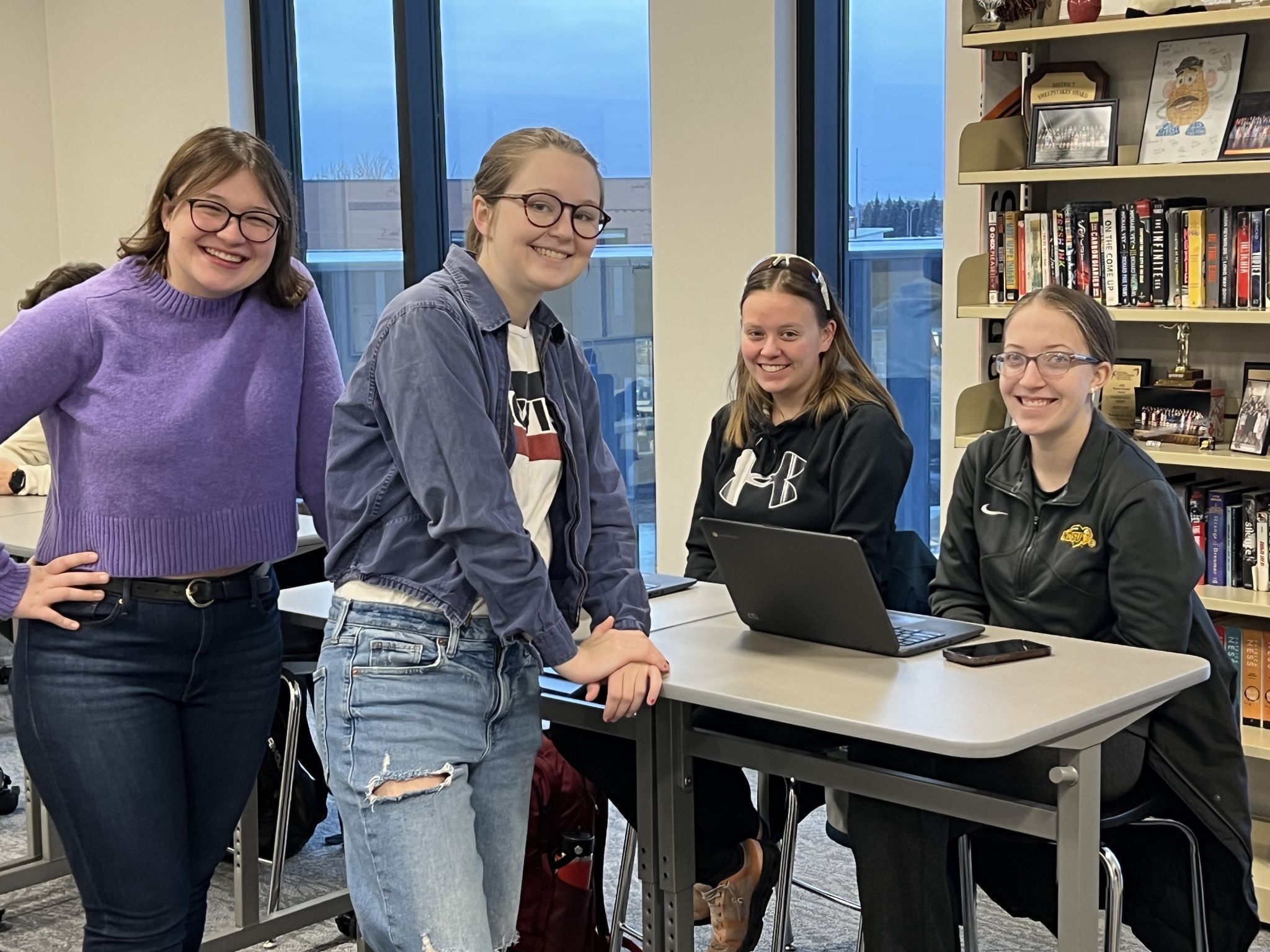
All 7, 466 Moorhead students, including these high schoolers, use Chromebook computers throughout the school day. Their cellphones, however, are off limits during classes. Photo/Moorhead School District.
Nancy Edmonds Hanson
Students returning to Moorhead schools this week have brought all the essentials with them. A decade ago, backpacks were primarily stocked with notebooks, pens and pencils and the kinds of school supplies their parents remember. But now there’s something else – digital technology.
On the one hand, that means Chromebooks. All 7,466 young Spuds, from kindergarten through high school, are equipped with the small laptop computers that have become a vital tool for learning.
On the other hand – literally, in that hand – is the cellphone. They’ve become an irreplaceable part of life for most in middle and high school. And when they come to school, they can become a problem … distracting, disrupting and disturbing students in the classroom.
“Moorhead schools have had policies on phones ever since I’ve been in this position,” says Dr. Jeremy Larson. He was named assistant superintendent of learning five years ago after 10 as principal at Horizon Middle School. “The problem comes and goes. They’ve slowly crept in. Kids have phones so much younger than they used to.
“We control what we can while we have them here during the school day. We can’t necessarily police what happens outside of school, but it filters back the next day.”
The problem, he points out, is the addictive nature on online apps like Instagram, Snapchat, Tik Tok and others. “They all follow social media. They want to get ‘likes.’ It’s almost a measure of how popular you are.” He smiles. “You don’t see kids passing notes much anymore.”
The school system has developed its own rules on cellphones over recent years: No phones at all in elementary schools; devices stored in lockers in middle school; and turned off and pocketed during classes at the high school. A first offense may result in the teacher seizing the device for the duration of class. After three or four repetitions, parents are called in to discuss solving the problem.
Control is especially challenging at Moorhead High. While middle school students have personal lockers where their devices are to be stored during school hours, the new high school does not provide individual lockers. Instead, its 2,200 students can use their digital IDs to check one out. That means thousands of phones remain close at hand throughout the day – stored in backpacks, Larson says hopefully, and turned off to prevent vibrating alerts when messages come in.
“That wasn’t the case last year, and some abused it,” he concedes. “Teachers are trying a variety of things this fall. Some have a designated spot where phones will be dropped off when students come into the classroom. It’s new, and we’re trying to roll it out.” The tactics, he adds, aren’t uniform at this point; several approaches are being tested. Students are permitted to use their phones during the 15-minute breaks between classes and at lunch.
But this is a transitional year. Directed by the 2024 Legislature, the Minnesota School Boards Association is developing a model policy on students’ possession and use of phones on campus. The final draft is due in December. Local school boards will then be required to develop a policy (not necessarily the statewide model version) by March 2025.
Meanwhile, the same technology has become an important tool for teachers. The use of Chromebooks had begun before the COVID pandemic, Larson notes, “but boom! – everybody had them.” They became a vital tool during the days when schools were closed and teachers communicated with their classes via the internet. Since then, all elementary teacher materials have migrated online, and online resources have replaced individual take-home texts in many classes.
The Chromebooks’ online access is limited to relevant educational sites, including the Mhdschools mobile app and Powerschool, the principle communication tool for parents with students in the system. (They can also be accessed by cellphone.) The apps include the school calendar, events, lunch menus and other information on what’s happening at school. The school district is transitioning from Facebook and X/Twitter, he adds, to Instagram for public information.
More information on the district’s policies, including its approach to preventing online bullying, can be found on its website, www.moorheadschools.org.



